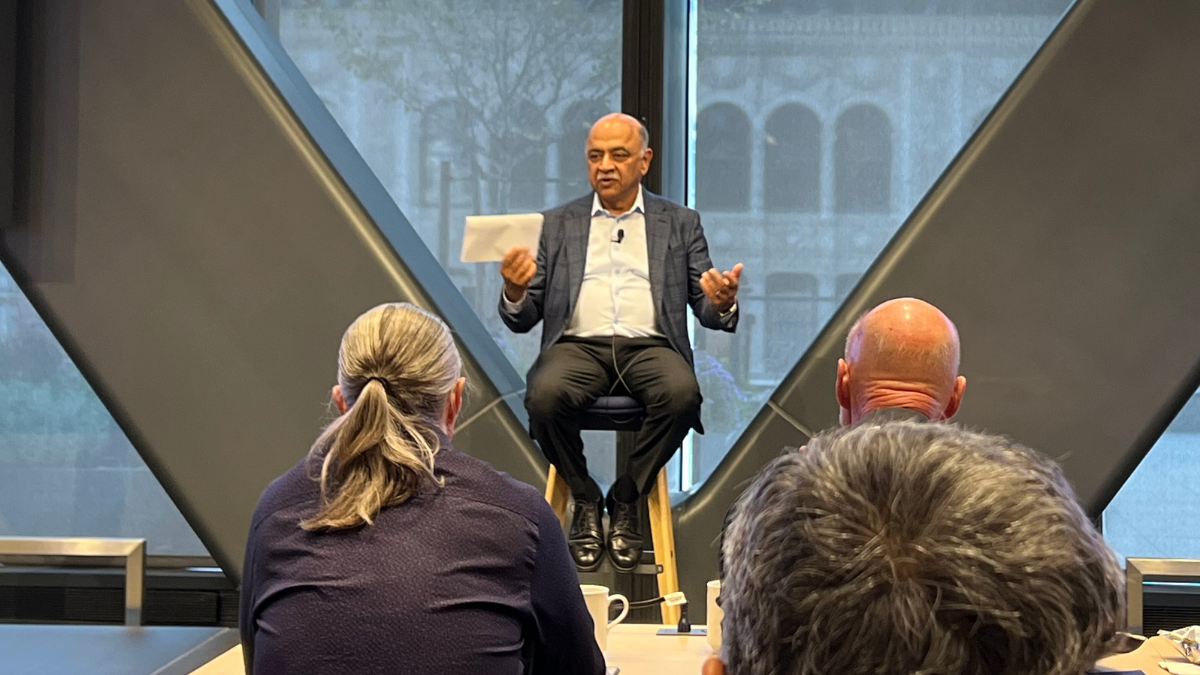What’s Next for IBM Consulting
If there is anything I have learned in my almost three decades of covering data/digital transformation, M2M, the IoT (Internet of Things), and the AI (artificial intelligence) space, it is that we must embrace technology or be left behind. Industries today must recognize gen AI and LLMs (large language models) bring huge opportunities, but they [...] The post What’s Next for IBM Consulting first appeared on Connected World.

If there is anything I have learned in my almost three decades of covering data/digital transformation, M2M, the IoT (Internet of Things), and the AI (artificial intelligence) space, it is that we must embrace technology or be left behind. Industries today must recognize gen AI and LLMs (large language models) bring huge opportunities, but they must also proceed in a way that is ethical and secure. It is a very fine line that enterprises and companies of all sizes must walk today, but the good news is the technologies are emerging, transforming our ability to communicate and collaborate.
Last week, I had the opportunity to attend a press and analysts event hosted by IBM’s Analyst Relations team at IBM’s new flagship New York City Headquarters at One Madison Ave. On the first half-day of the event, IBM shared updates for their Consulting business and here we see the technologies are advancing rapidly, offering incredible opportunities to customers. “We are at a moment in time where the consulting industry—the entire industry—is about to change dramatically,” says Mohamad Ali, SVP and head, IBM Consulting.
Ali says it is going to supercharge its 160,000 consultants with 1.6 million digital workers. In this moment in history, we are going to see science and technology combined with skills and expertise, he explains. This next era will be an era of science and consulting.
This new era most certainly will include gen AI. In fact, Ali says IBM Consulting now has more than $2 billion of the business in gen AI projects and 85% of the top clients are now engaged in one way or another in a gen AI pilot.
What the Customers Want
Perhaps one of the biggest opportunities is the productivity gains that can be achieved with technology. The AI-powered delivery platform sees 30-50% productivity gains on projects with reusable agents, applications, and methods.
Brian Gracely, senior director, portfolio strategy, Red Hat, says, “Customers biggest concerns are not should I pick the right model.” Typically, their concerns are:
- They want to get their data in models and have a level of control over the model.
- Have non-data scientists drive what this looks like.
- The ability to do rapid experimentation.
Arvind Krishna, CEO, IBM, says customers are asking how to do transformation, how to get more digital, and how to change enterprise processes.
“As more regulated industries start moving AI up … then we will need to talk about what is the data, how do we finetune it, how do we monitor it … I think all those questions will come up, but we are still probably a year or two from those becoming real questions,” Krishna says.
What IBM Offers
All of this comes as IBM is making some big advances to its enterprise AI offerings through a spectrum of technologies—from models and assistants, to the tools needed to tune and deploy AI specifically for companies’ unique data and use-cases. IBM is also paving the way for future AI agents that can self-direct, reflect, and perform complex tasks in dynamic business environments.
IBM continues to evolve its portfolio of AI assistant technologies—from watsonx Orchestrate that helps companies build their own assistants via low-code tooling and automation, to a wide set of pre-built assistants for specific tasks and domains such as customer service, human resources, sales, and marketing. watsonx Assistant can help build AI assistants. The company also recently unveiled the upcoming release of the next generation of watsonx Code Assistant, powered by Granite code models. Earlier this week, IBM announced Granite 3.0.
Additionally, IBM announced a major expansion of its AI-powered delivery platform, IBM Consulting Advantage. The multi-model platform contains AI agents, applications, and methods like repeatable frameworks that can empower 160,000 IBM consultants to deliver better and faster client value at a lower cost.
“We are in this new phase where people can leverage our utilities systems as a tool for advancement for things beyond what they can do with just a (classical GPU,)” says Jerry Chow, IBM fellow and director of quantum infrastructure.
Some of the big objectives are to reduce complexity and reduce the effects of the classical infrastructure.
“We need to not only push out this platform of performance but introduce these new items that allow us to drive this quantum algorithm discovery,” says Chow.
On a more personal note, the One Madison Avenue space itself is pretty amazing with the 10th floor offering this panoramic view of New York, which who doesn’t love that? What a great idea to entice employees to want to work in the office again. Let’s be real, even I wanted to hangout longer in the Blue café, which turns into a cocktail bar after 5 pm. However, I must admit the coolest thing I saw, and I am going to confess I still do not fully understand it yet, was the quantum wave light. I guess that’s a conversation for another time.
Want to tweet about this article? Use hashtags #IoT #sustainability #AI #5G #cloud #edge #futureofwork #digitaltransformation #green #ecosystem #environmental #circularworld #GenAI #IBM #watsonx
The post What’s Next for IBM Consulting first appeared on Connected World.

 Kevin
Kevin 





